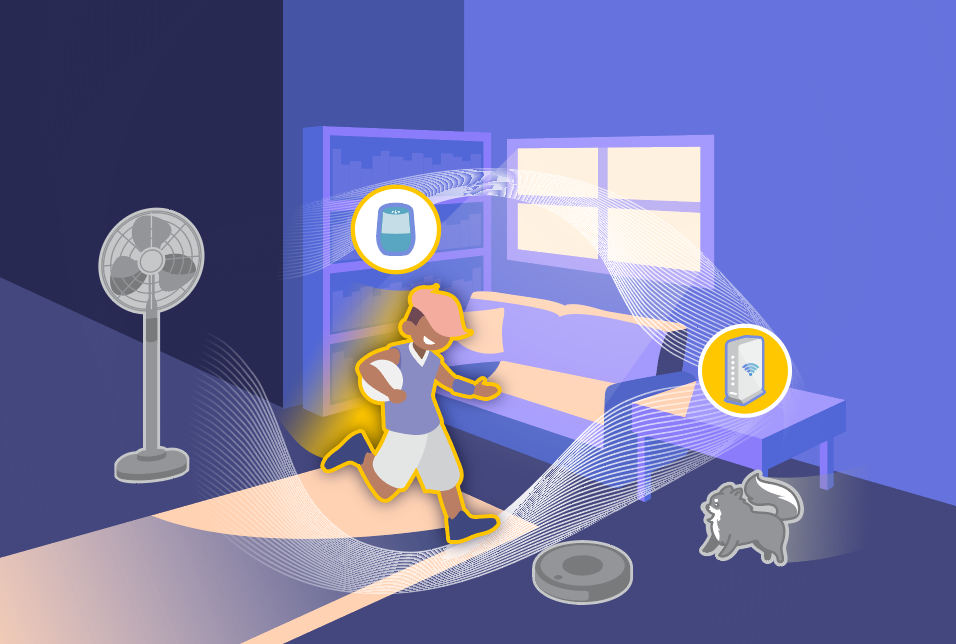
Figure 1 Illustration of Wi-Fi Sensing by the access point.

Figure 2 An example of signal propagation from a client device to the AP.
Since the dawn of civilization, humans have relied on light, starting with fire, to see and comprehend the world. Our methods of illuminating our homes have evolved from igniting sticks in caves to using Wi-Fi. Light and Wi-Fi are related, both being on the electromagnetic (EM) spectrum, with light allowing us to see and Wi-Fi enabling digital communications. Today, Wi-Fi represents the second-largest volume opportunity in the EM spectrum after light. The average household had 22 Wi-Fi-enabled devices in 2022, accounting for shipments of nearly 3 billion Wi-Fi chips.1 In comparison, households typically use an average of 40 light bulbs, with around 2.5 billion shipped annually.2
Homes were dark in terms of Wi-Fi energy before the introduction of Wi-Fi technology in 2000. However, homes are now saturated with an abundance of Wi-Fi energy, illuminating the spaces within. As this Wi-Fi energy is transmitted around the home, it reflects off objects and becomes attenuated as it moves through space and objects. In a static environment, this energy distribution is somewhat stationary, not changing during the transmission of a Wi-Fi signal. However, as a person moves around in the environment, the spectrum of energy distribution changes. These changes indicate there is motion within the home. This idea is illustrated in Figure 1. In the home shown in the diagram, the client devices illuminate the space with Wi-Fi energy and the access point (AP) observes the changes in the Wi-Fi spectrum due to human motion.
WHAT IS WI-FI SENSING AND HOW DOES IT WORK?
Wi-Fi Sensing is the principle of measuring and classifying disturbances in the Wi-Fi spectrum over time due to a person’s movement. The sensing machine learning software to measure these disturbances is typically contained within the Wi-Fi APs. The Wi-Fi clients radiate the EM waves for sensing in the form of standard Wi-Fi communication data frames. The clients transmit signals back to the AP at the sounding rate, which can be adjusted to be slower or faster. There are limits to this sounding rate adjustability, however. If the rate is too slow, some of the motion will be missed, while a rate that is too fast can impact the Wi-Fi throughput performance as the sensing software within the AP consumes more CPU. To achieve good sensing performance, an optimal sounding rate is around 10 Hz or 100 ms. A significantly higher sounding rate may negligibly improve motion detection latency but at the expense of degrading Wi-Fi network data communication performance, making that an inadvisable trade-off.
Taking a simple case where a Wi-Fi client sends a sounding packet to the AP; some of the radiated spectra will reflect off a wall as Ray 2 and another portion goes directly to the AP as Ray 1 shown in Figure 2. For simplicity, this analysis only considers a very small part of the Wi-Fi spectrum at frequency ω, typically a single orthogonal frequency-division multiplexing (OFDM) sub-carrier. The frequency spectrum received by the AP (SAP) as a function of time can be written as:

where:
a1(t) = the amplitude received by the AP due to Ray 1
a2(t) = the amplitude received by the AP due to Ray 2
Δt = the time delay for Ray 2 compared to Ray 1 since it will take longer to get to the AP
t = time.
SAP may also be expressed as a complex exponential with a magnitude A(t) as defined by equation 1. When there is no motion and all objects are static, the data sent to the AP remains the same, resulting in ΔA= 0 from one sounding packet to the next. However, if the person is moving, ΔA would not be zero. The change in both the a1(t) and a2(t) terms stems from the shift in the individual’s position within the environment, leading to changes in the overall level of reflection and absorption. Therefore, motion can be detected by looking at ΔA. Wi-Fi is a wideband signal, but the same principle can be applied if the spectrum is broken down into small frequency slices using the Fourier series. Utilizing larger bandwidths enhances the sensitivity to changes resulting from the movement of an individual. It is worth noting that typical Wi-Fi bandwidths range from 20 MHz, 40 MHz, 80 MHz to 160 MHz.
Assuming a bandwidth of 20 MHz, the spectrum undergoes modifications as a person moves. For instance, the initial spectrum resembles the traces shown in Figure 3a, but as the person moves, it transforms into the trace shown in Figure 3b. The disparity between the two traces is illustrated in Figure 3c. Additionally, in Wi-Fi 5, both 2.4 GHz and 5.8 GHz can be employed. However, with the advent of Wi-Fi 6, the 6 GHz band was introduced, further enhancing sensitivity. To filter out unwanted environmental phenomena that do not represent human motion, like ceiling fans, Wi-Fi interference and pets, requires an understanding of how the patterns present in ΔA to be able to remove them accordingly. The use of multiple client devices sounding the AP forms a Wi-Fi Sensing network, which allows motion localization through triangulation. For example, if a person is walking close to a Wi-Fi smart speaker, the motion is localized to where the Wi-Fi smart speaker is located.

Figure 3 (a) Aω(t) vs. ω at time t, (b) Aω(t+Δt) vs. ω at time t+Δt, (c) ΔAω vs. ω.
Features to enhance Wi-Fi Sensing have been under discussion by the 802.11 group since late 2019. A task group responsible for defining an amendment to the 802.11 standards was formed in late 2020 and a first draft was completed in early 2023. These motion standards will align with both Wi-Fi 6 and Wi-Fi 7 standards. This amendment defines components that will benefit sensing applications on both the AP and client sides. However, since the primary usage of Wi-Fi is digital communications, a sensing application will need to share the same spectrum. This constraint will ultimately limit the maximum rate at which measurement exchanges can be scheduled.
The integration of mmWaves into standards will necessitate alternative techniques for motion detection. These are likely to be similar to those employed in standard radar systems. These techniques possess the capability to detect and track motion effectively.
APPLICATIONS OF WI-FI SENSING
Since Wi-Fi Sensing detects motion and locates its source, the obvious application is home security. Wi-Fi Sensing may be the most cost-effective solution for home security since it can be provided to customers via an over-the-air software update to their Wi-Fi AP. Once the Wi-Fi Sensing software is installed on the AP, it turns the client’s Wi-Fi-connected devices into motion sensors. This forms a motion network that localizes the motion to the closest device’s location. The incidence of false detections is minimized by not relying on a singular data point, such as the presence of movement at one point of entry. Rather, the system is designed to track motion as it traverses through different devices within the home.
Beyond home security, Wi-Fi Sensing also provides insights into what is happening at home. For example, it can tell when your children come home from school or when the dog walker arrives at your home when you are on vacation. With Wi-Fi Sensing, there is a natural level of privacy since the information collected has less context than a camera. Unlike cameras, which capture a lot of context and can be intrusive, Wi-Fi Sensing only focuses on motion, which is less invasive and provides fewer details.
Wi-Fi Sensing also presents significant opportunities in the elder care market, which is growing as more seniors choose to age independently rather than move to care homes. Globally, there are over 650 million people aged 65 or older, with the value of the market opportunity widely reported at more than $80 billion. This technology can help families monitor their loved ones by providing valuable insights on:
- Activity levels
- Sleep patterns
- Number of times someone wakes up during the night
- Proof of life
- Pattern analysis.
Other applications for Wi-Fi Sensing, such as energy management and home automation, rely on detecting motion or lack thereof. Wi-Fi Sensing networks can be used to adjust heating or cooling systems or turn devices, like lights, on and off as necessary.
WI-FI SENSING DEPLOYMENTS
As the number of households equipped with Wi-Fi continues to climb, broadband customers increasingly expect more than just fast internet. They seek greater accessibility, cost savings and increased value. Communication was only the first use of Wi-Fi and now Wi-Fi Sensing offers internet service providers (ISPs) an innovative motion detection system that delivers convenience, privacy and peace of mind for a wide variety of applications. As of today, more than eight million homes have Wi-Fi Sensing and up to 30 million Wi-Fi clients can be motion sensors. With the success of this deployed base, the number of Wi-Fi Sensing-enabled devices is rapidly increasing. With Wi-Fi Sensing, consumers receive tangible benefits beyond their standard internet connection. Once integrated into an ISP’s AP, Wi-Fi Sensing opens doors to future services and expansion into new verticals.
Cognitive Systems’ Wi-Fi Sensing solution, WiFi Motion™, serves as a low-risk way for ISPs to enter new markets, such as home security, eldercare, energy management, network health and more, by leveraging their existing infrastructure. As a software-only solution, WiFi Motion does not require any additional hardware costs upon deployment and ISPs can continuously roll out new motion-based services at no additional expense. Consequently, WiFi Motion is highly scalable, making it an appealing long-term strategic roadmap priority for ISPs worldwide. As Wi-Fi technology improves, standards evolve and the Wi-Fi Sensing market expands, WiFi Motion will become a standard feature of homes of the future. While the world changes rapidly, one constant is that people desire innovative and useful technology.
References
- “Wi-Fi Chipset Shipments will near 18 Billion Chipsets during the Next Five Years,” ABI Research, May 5, 2014, Web: www.abiresearch.com/press/wi-fi-chipset-shipments-will-near-18-billion-chips/.
- “Shine a Light, The Making of Light Bulbs,” SupplyChainX, June 13, 2018, Web: supplychainx.highjump.com/light-bulb-manufacturing.html.






